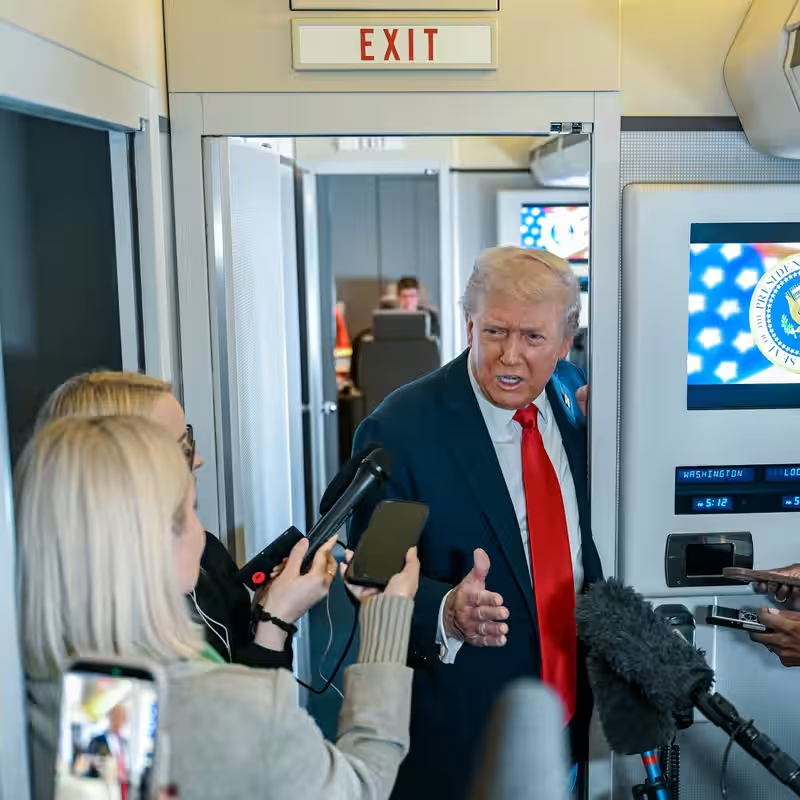Table of Contents
- Trade War Escalation Sparks Market Volatility
- Rare Earths vs. AI Chips: The New Battleground
- Trump and Xi’s High-Stakes Standoff
- What This Means for Investors and Businesses
- Corporate America’s Response: From JPMorgan to Apple
- What’s Next in the U.S.-China Economic Rift?
- Sources
Trade War Escalation Sparks Market Volatility
Despite a short-term rebound in global markets, investors are bracing for a renewed and potentially more damaging phase of the U.S.-China trade war. Tensions flared last week when President Donald Trump threatened steep new tariffs on Chinese goods—reportedly in response to Beijing’s export restrictions on rare earth materials critical to defense, tech, and clean energy sectors.
The announcement triggered a sharp sell-off on Friday, with S&P 500 futures, oil prices, and cryptocurrencies all tumbling. While markets recovered slightly on Monday amid hopes of de-escalation, analysts warn the underlying conflict is far from resolved.
Rare Earths vs. AI Chips: The New Battleground
This latest trade skirmish centers on two strategic resources: China’s dominance in rare earth elements and America’s edge in artificial intelligence semiconductors.
China controls over 80% of the global supply of rare earths—vital for everything from electric vehicles to missile guidance systems. Last week, Beijing imposed sweeping export bans on these materials, citing “national security.”
In response, Trump floated the idea of tariffs that could push duties on Chinese imports to a staggering 130%. As Deutsche Bank strategist Jim Reid put it: “This battle is shaping up as rare earths versus A.I. chips.”
The U.S., meanwhile, restricts sales of advanced AI chips to China—a move Beijing views as economic warfare. Both sides are leveraging their technological choke points, raising fears of a full economic decoupling.
Trump and Xi’s High-Stakes Standoff
President Trump attempted to calm markets over the weekend, posting on social media: “Don’t worry about China, it will all be fine! … The U.S.A. wants to help China, not hurt it!!!”
But China’s Commerce Ministry fired back, declaring it “is not afraid” of a trade war. Officials in Beijing appear unwilling to back down, especially ahead of key domestic economic targets.
With a November deadline looming for the next round of reciprocal tariffs, the window for diplomacy is narrowing. Analysts say both leaders are playing to domestic audiences—Trump to his “America First” base, Xi to nationalist sentiment within the Communist Party.
What This Means for Investors and Businesses
The uncertainty is already reshaping global supply chains and investment strategies:
- Gold prices have surged as investors seek safe-haven assets.
- American soybean farmers are feeling the pinch as China shifts purchases to Brazil and Argentina.
- Big Tech and defense contractors face potential disruptions in component sourcing.
- Corporate earnings outlooks are clouded by possible tariff shocks in Q4.
“These tensions will probably be a recurring theme in the years ahead as both sides compete on the global stage for dominance,” Reid warned.
Corporate America’s Response: From JPMorgan to Apple
In a sign of the times, major U.S. corporations are doubling down on domestic investment—partly to hedge against trade risks and partly to align with Trump’s economic agenda.
JPMorgan Chase recently announced a $1.5 trillion Security and Resiliency Initiative over the next decade, targeting U.S. manufacturing, defense, energy, and AI. Apple pledged an additional $100 billion in U.S. investments, while Pfizer committed $70 billion to R&D and infrastructure.
Critics argue these announcements are as much about public relations as strategy. “They appear tailored in part to win points with Trump,” one analyst noted.
What’s Next in the U.S.-China Economic Rift?
While both nations have incentives to avoid full-blown economic war, the path forward remains murky. Upcoming talks at the G20 summit could offer a diplomatic off-ramp—but only if both sides show flexibility.
For now, businesses and investors are preparing for volatility. As one hedge fund manager told The New York Times: “Hope for the best, but build your portfolio for the worst.”




